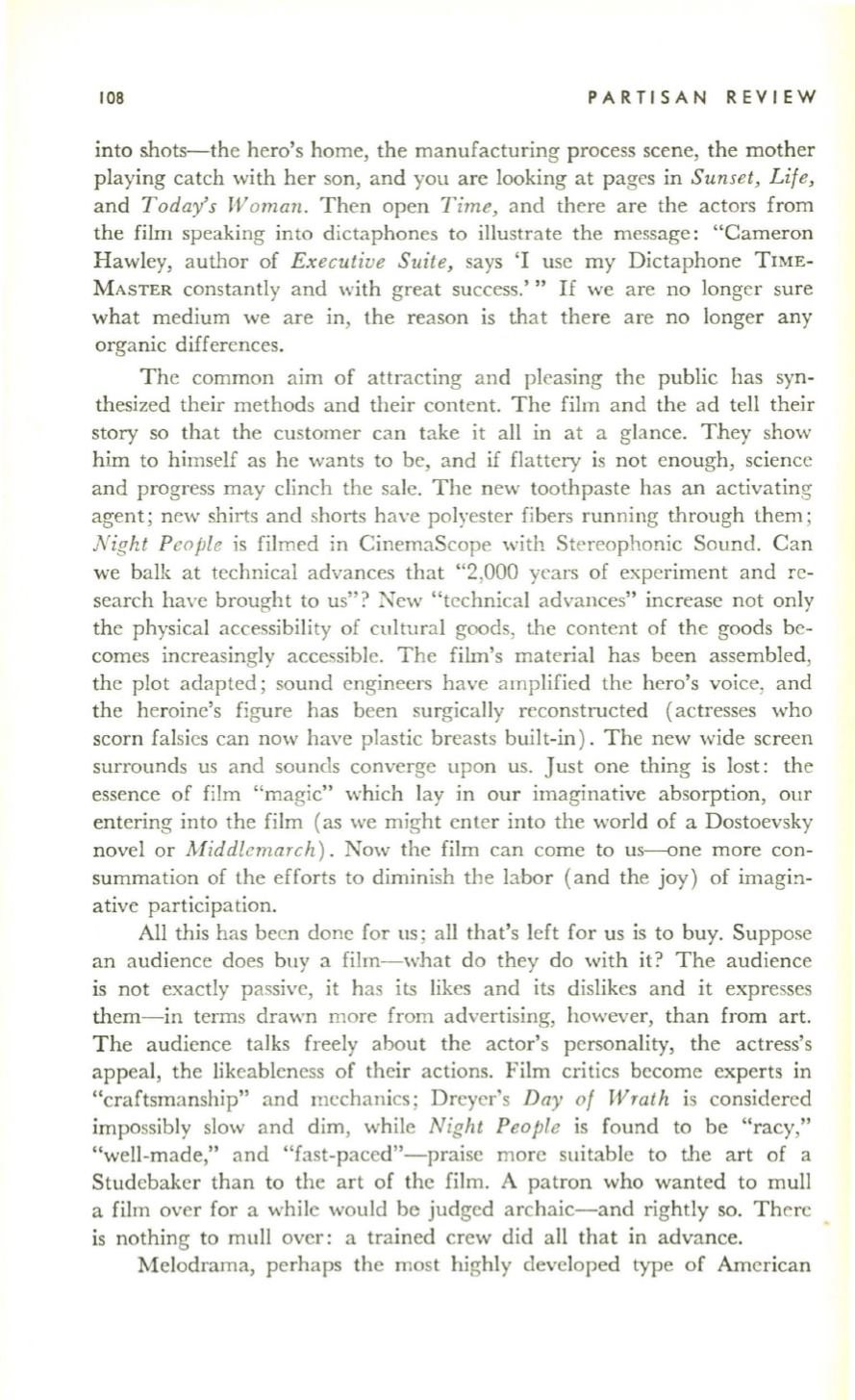
108
PARTISAN REVIEW
into shots-the hero's home, the manufacturing process scene, the mother
playing catch with her son, and you are looking at pages in
Sunset, Life,
and
Today's Woman.
Then open
Time,
and thcre are the actors from
the film speaking into dictaphones to illustrate the message: "Cameron
Hawley, author of
Executive Suite,
says
'I
use my Dictaphone TIME–
MASTER constantly and with great success.'''
If
we are no longer sure
what medium we are in, the reason is that there are no longer any
organic differences.
The common aim of attracting and pleasing the public has syn–
thesized their methods and their content. The film and the ad tell their
story so that the customer can take it all in at a glance. They show
him to himself as he wants to be, and if flattery is not enough, science
and progress may clinch the sale. The new toothpaste has an activating
agent; new shirts and shorts have polyester fibers running through them;
Night PeajJle
is filmed in CinemaScope with Stereophonic Sound. Can
we balk at technical advances that "2,000 ycars of experiment and re–
search have brough t to us"? New "technical advances" increase not only
the physical accessibility of cultural goods, the content of the goods be–
comes increasingly accessible. The film's material has been assembled,
the plot adapted; sound engineers have amplified the hero's voice, and
the heroine's fi gure has been surgically reconstructed (actresses who
scorn falsies can now have plastic breasts built-in). The new wide screen
surrounds us and sounds converge upon us. Just one thing is lost: the
essence of film "magic" which lay in our imaginative absorption, our
entering into the fi lm (as we might enter into the world of a Dostoevsky
novel or
Middlemarch) .
Now the film can come to us--{)ne more con–
summation of the efforts to diminish the labor (and the joy) of imagin–
ative participation.
All this has been done for us; all that's left for us is to buy. Suppose
an audience does buy a film-what do they do with it? The audience
is not exactly passive, it has its likes and its dislikes and it expresses
them-in terms drawn more from advertising, however, than from art.
The audience talks freely about the actor's personality, the actress's
appeal, the likeableness of their actions. Film critics become experts in
"craftsmanship" and mechanics; Drcyer's
Day of Wrath
is considered
impossibly slow and dim, while
Night People
is found to be "racy,"
"well-made," and "fast-paced"-praise more suitable to the art of a
Studebaker than to the art of the film. A patron who wanted to mull
a film over for a while would be judged archaic-and rightly so. Therc
is nothing to mull over: a trained crew did all that in advance.
Melodrama, perhaps the most highly developed type of American


